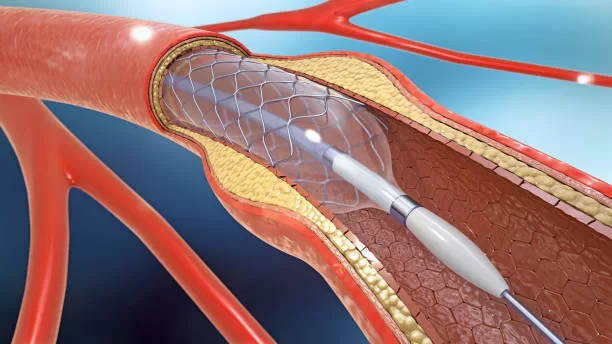It is interesting to evaluate the feasibility, safety, and predictive factors of the success of coronary stent implantation. Stent technology has changed tremendously, thus resulting in stents with improved properties, which may indeed allow stent placement without prior balloon dilatation.
In the present world, one of the leading causes of death happens to be coronary artery disease (CAD). There are indeed several ways to treat this disease, and also using a stent is currently the most appropriate way in several cases. Of late, the use of stents has indeed rapidly increased, and have been introduced in various models, with different geometries and also various materials.
In order to select the most appropriate stent that is required, it is necessary to have an analysis of the mechanical behavior of several types of stents.
The focus is on different types of coronary stents, materials, stent processing techniques, stent design, classification of stents that are based on the mechanism of expansion, and also problems and complications of stents. The optimum design of stents in the future is indeed possible by simulation and also by making use of numerical methods and adequate knowledge of stents and artery biomechanics.
Nowadays all across the world, coronary artery disease happens to be a leading cause of human death, characterized by the narrowing of one’s arteries due to plaque.
Atherosclerosis has been acknowledged as a cardiovascular disease that has been on the rise worldwide of late. Its pathological mechanism entails that fat or lipids tend to accumulate on the artery wall under the influence of various cardiovascular risk factors. These deposits form a large number of plaques that lead to the thickening of one’s arterial wall, blockage of blood vessels, and thus affect blood flow. Severe atherosclerosis can rather cause coronary artery disease, heart attack, and death.
There are several procedures for occluding arteries, including bypass, angioplasty by balloon, and also use of stents.
The use of a stent is an important model in the treatment of atherosclerosis, which is indeed performed to relieve obstruction and also restore blood by placing a vascular stent on the stenosis and hard part of the artery, dilating at that point.

Presently, the use of cardiac stents has greatly increased due to their ease and also efficiency in penetration. The most appropriate stent design, stent evaluation, and analysis of different behaviors mechanically are also very important. Stents are rather small cylindrical scaffolds whose main purpose is to remove the arterial obstruction or even to prevent elastic arterial reversibility following of course dilation of the artery or balloon angioplasty. Stent fixation has advantages over other treatments like no surgery, less complexity, less pain, and also faster healing. The use of coronary artery stents has indeed increased. Coronary stents are currently made use of in more than 90% of PCI procedures.
Coated stents are no doubt new-generation stents coated with a thin polymer membrane for the purpose of vascular therapy. Coated stents do increase tissue granulation and also suppress thrombosis as compared to bare-metal stents.
Superficial features of coronary stents do play an important role in inhibiting stent restenosis and also late stent thrombosis. Coated stents are considered to be part and parcel of a new generation of stents that are coated with a thin polymer membrane in order to treat blood vessels.
Coated stents do enhance tissue granulation and also suppress thrombosis as compared to bare-metal stents. Also, optimized geometries for stents and surfaces, as shown by thin stents, end to help to decrease thrombosis, in spite of the stent configuration and no doubt variation in placement.
Stent thrombosis is a very deadly complication. Yet, concerns that drug or polymer coatings are inherently thrombogenic need to be reconsidered, as primary clotting by drug/polymer coatings is reduced.
Stent’s efficiency metrics are longitudinal strength, radial strength, flexibility, fatigue resistance, tissue damage, drug distribution for drug-eluting stents, and flow criteria
Stents for coronary stent implantation can be categorized based on their expansion mechanism, their design, or their materials.
Conclusion:
Studies in the field of stents from the past to present times reflect that several useful topics have been addressed in the direction of its development
